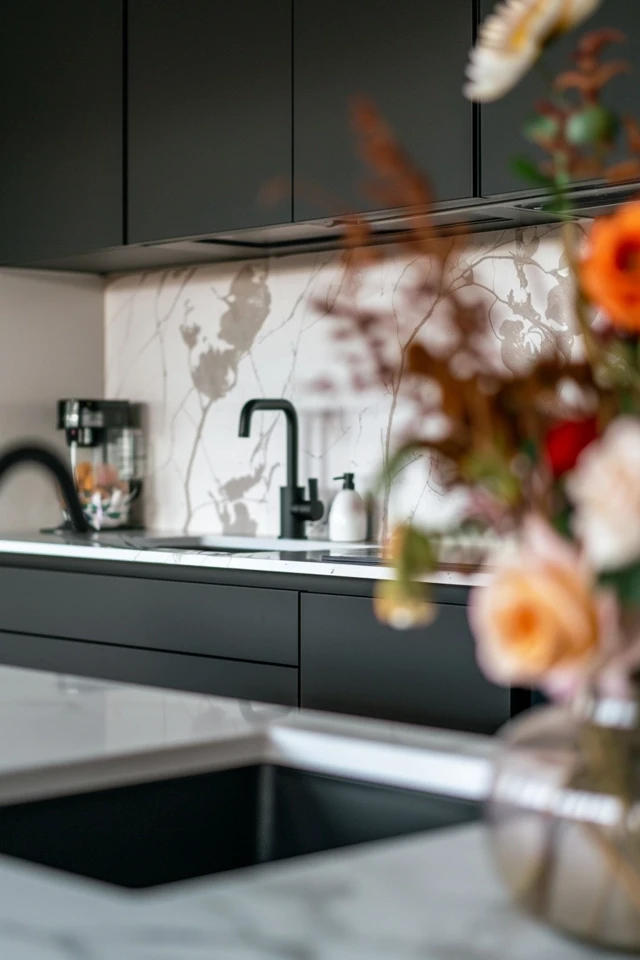Hello, I’m here to share some valuable tips on how to remove rust from your kitchen sink and achieve a spotless shine. Over time, stainless steel sinks can lose their sparkle and accumulate stains and limescale, making them appear grimy. Regular cleaning is essential not only for kitchen hygiene but also to maintain the appearance and longevity of your stainless steel sink.
Before diving into the rust removal process, start by rinsing the sink to remove any food debris and clear the drain of scraps. This will ensure a clean surface to work with. For everyday cleaning, you can use dish soap or a general kitchen cleaner along with an anti-scratch sponge. Avoid using wire wool or abrasive pads, as they can scratch the sink’s surface.
To tackle stains and limescale, you can try some effective DIY solutions. Baking soda works wonders for removing stains, while a 1:1 solution of white vinegar and water can help dissolve limescale buildup. Alternatively, you can try cleaning your sink with club soda, vinegar and oil, or dish soap and oil.
If you’re dealing with tougher stains, I recommend using Bar Keeper’s Friend, specifically designed for stainless steel surfaces. This powerful cleaner will help remove stubborn rust stains and restore the shine to your sink.
Remember, it’s important to avoid using steel wool, scrubbing brushes, abrasive sponges, bleach, chlorine, or oven cleaner on your stainless steel sink, as these can cause damage. After each use, remember to rinse and dry the sink to prevent the buildup of limescale and maintain its shine.

Key Takeaways:
- Regular cleaning is important for kitchen hygiene and to maintain the appearance of a stainless steel sink.
- Rinse the sink to remove any food debris and clear the drain of scraps before cleaning.
- Use dish soap or a general kitchen cleaner with an anti-scratch sponge to clean the sink, avoiding wire wool or abrasive pads that can scratch the surface.
- Baking soda can be used to remove stains, while a 1:1 solution of white vinegar and water can help remove limescale.
- Club soda, vinegar and oil, and dish soap and oil are alternative methods for cleaning and adding shine to a stainless steel sink.
Additional Tips for Keeping Your Kitchen Sink Clean
Regularly cleaning your kitchen sink is essential for maintaining its longevity and preventing unpleasant odors and dirt buildup. Different sink materials may require specific cleaning methods, so it’s crucial to identify the material of your sink before starting the cleaning process.
To begin, clear your sink completely by removing all dishes, rinsing out food scraps, and clearing the strainer of any particles. Preparing the surrounding countertop and sink area is also important for an efficient cleaning session. Clear away any food debris and consider using a protective covering to keep the counter’s material safe from potential damage.
When it comes to cleaning the sink, use a soft sponge or scrubbing brush along with warm soapy water. Scrub the sink in a circular motion, following the natural grain of the material for optimal results. Don’t forget to pay attention to the drain, faucet, and handles. Use a toothbrush or cloth to clean these areas thoroughly.
Once you’ve finished scrubbing, rinse the sink with clean, running water and dry it with a microfiber cloth to prevent water spots. To eliminate any lingering bacteria or germs, sanitize the sink after handling raw meat or greasy food. You can use a disinfectant solution or a commercial spray or sanitizer wipe for this purpose.
To maintain a well-functioning kitchen sink, it’s essential to run the garbage disposal regularly and clean it at least once a month. This practice helps prevent buildup and unpleasant odors. Additionally, make sure to periodically clean the sink drain to avoid clogs and backups.

Remember the Key Points:
- Clear your sink completely before cleaning.
- Prep the surrounding area to protect it and make cleaning more efficient.
- Use warm soapy water and a soft sponge or scrubbing brush to clean the sink.
- Don’t forget to clean the drain, faucet, and handles.
- Rinse the sink thoroughly and dry it to avoid water spots.
- Sanitize the sink after handling raw meat or greasy food.
- Regularly run the garbage disposal and clean it monthly.
- Maintain the sink drain by periodically cleaning it.
By incorporating these additional tips into your kitchen sink cleaning routine, you’ll be able to enjoy a spotless and well-maintained sink. Taking care of your sink not only enhances the overall cleanliness of your kitchen but also helps prevent rust stains, ensuring its longevity.

Conclusion
Keeping your kitchen sink spotless and free from rust is essential for maintaining a clean and hygienic kitchen. By following these kitchen sink cleaning tips, you can achieve a shine that will make your sink look brand new.
Stainless steel sinks can be effectively cleaned using simple household items such as dish soap, baking soda, and white vinegar. These natural ingredients help remove rust and stains, leaving your sink spotless.
Remember to choose the appropriate cleaning products and techniques based on the material of your sink. Different sink materials require different cleaning methods to ensure optimal results. Regular maintenance and cleaning will prevent the buildup of rust, stains, and odors, prolonging the lifespan of your kitchen sink.
Incorporate these tips into your cleaning routine to keep your sink looking pristine. By dedicating a little effort and using the right cleaning techniques, you can enjoy a spotless kitchen sink that adds beauty and functionality to your kitchen.

